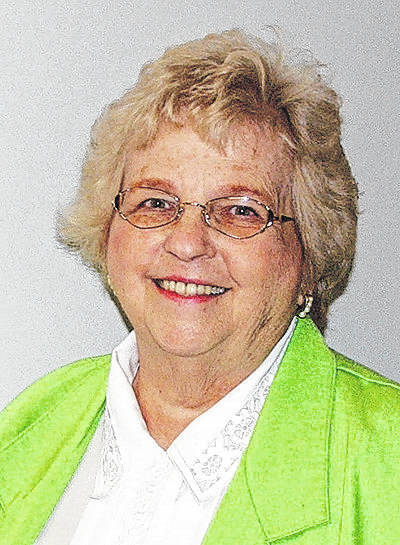
Not long ago I shared the story of the Duck Pin Alley bowling lane, one of the earlier bowling alleys in the city of Xenia, The facility was located on the second floor of a downtown building. It was small by today’s standards, but met the needs of the local bowlers.
Later Community Bowling Lanes became a leading facility. The company opened for business in 1955. This was a large bowling alley with 24 lanes. Located at 66 S. Allison Ave. it was well received.
At that time, and for several more years, young men were hired to be pin boys If the kids were in school, sometimes retired gentlemen took on the project. The pin boys were responsible for setting the pins on the proper marks before the ball was rolled down the alley. After the bowlers knocked down the pins, they were to set them up again on each of the lanes. This could be a dangerous job, if they did not move away fast enough before the next ball came rolling down the lane.
Eventually, someone invented an automatic pin setter which would pick up the pins left standing after the first ball and then sweep the fallen ones away, re-setting those which not been knocked down on the first ball. After the second ball hit the remaining pins, all 10 pins were put in place mechanically, ready for the next bowler. Of course, with anything mechanical, sometimes the machine would need service. Usually this required an employee clearing the jam of pins.
In 1957 the bowling alley had been in business two years when a new manager was appointed. Arthur Curlett had managed the alley but left the position to become city auditor. His assistant was Ethel Cowen who previously had been a private secretary and bookkeeper. When Curlett moved into his new position, Mrs. Cowan became the manager. By this time, bowling was not considered only a man’s sport, but ladies were enjoying the challenge as well so a female manager was acceptable to all bowlers.
Bowling leagues were formed, usually consisting of five persons per team. Men in one league, and women in another. There were also leagues for “mixed doubles,” usually two men and two women on a team.
League bowling was very much desired by the owners, due to the fact that the leagues guaranteed that a number of lanes would be in use nearly each week.
It was always exciting to hear the announcement over the loud speaker that someone had earned a particularly high score. This was often followed by a cheer from the team mates and others nearby.
In leagues, trophies were usually given to the best bowlers. Most bowlers who received trophies proudly displayed them on a mantle or book shelf.
I bowled for a few years with a ladies’ morning league. The first year, our team members each received a trophy. It was gold, about three inches tall, and said “Last Place Team”. We did better the next year, but enjoyed our “trophy” anyway, the only one we ever received.
School-age children were encouraged to come to the bowling alley on Saturdays. For students who did not know how to bowl, instructions were offered.
Folks who bowled on a regular basis usually owned their own bowling shoes and ball and a nice bag to carry them. If you owned neither, shoes could be rented (no street shoes allowed on the lanes) and then the bowler would sort through a large number of available balls to find the one with the best fit.
The pro shop was a welcome addition to the facility because you could purchase your own shoes and then select a new ball from a wide variety of colors and weights. Each ball had the holes drilled by the shop to the specifications necessary for the individual bowler.
The Bon-Aire Motel was next door, owned by the same group of investors who owned the bowling alley. The motel was small but provided an outdoor swimming pool which was sometimes made available to local residents.
Along with many other businesses in Xenia, the bowling alley was destroyed in the April 3, 1974 tornado. The reports stated that 95% of the building had been destroyed with the west wall completely gone. The building was not far from the Koehler Furniture manufacturing plant so it was no surprise when two of the Koehler trailers landed beside the wall and a third, loaded with furniture, fell on top of the bowling alley roof with furniture seen hanging out of that trailer.
At that time the employees were Frank Liming, Ethel Cowan, Bob Delaney and Martin Kolozi.
Since Community Lanes had been such a good investment, the owners decided to construct another bowling alley. The site selected was where the Bon Aire Motel had previously been located. The motel was never rebuilt.
On April 3, 1975, exactly one year after the tornado, a new Community Lanes Bowling Alley opened for the public. The parking lot could accommodate 285 cars and there were an estimated 2,200 bowlers a week in leagues plus another 3,500 coming for open bowling. Two people could bowl for $5 per game.
However, some things come to an end. Community Lanes closed for good in early August 2006. The building was razed on Dec. 11, 2007.


